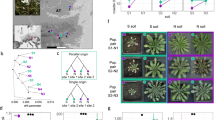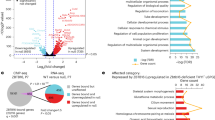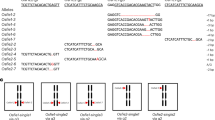Abstract
FERNS are well known for possessing polyploid complexes, but we do not know of any instance where Howard and Manton's1 method has been used for analysis of their genome relations and elucidation of their nature of polyploidy. The primary reason for this appears to be the difficulties involved in raising autotetraploids in ferns. So far the standard practice has been to raise such strains by apospory2. Manton3 alone made a meiotic analysis of the autopolyploid series in Osmunda regalis L. following this method and found reasonably high degree of multivalents.
Similar content being viewed by others
Article PDF
References
Howard, H. W., and Manton, I., Ann. Bot., N.S., 10, 1 (1946).
Heilbronn, A., Z. Ind. Abst. Vererb. Supp., 2, 830 (1927). Lawton, E., Amer. J. Bot., 19, 303 (1932); 23, 107 (1936). Manton, I., J. Genet., 25, 423 (1932).
Manton, I., “Problems of Cytology and Evolution in the Pteridophyta” (Cambridge Univ. Press, 1950).
Panigrahi, G., Curr. Sci., 24, 238 (1955).
Mehra, P. N., and Loyal, D. S., Ann. Bot., N.S., 20, 544 (1956).
Manton, I., and Sledge, W. A., Phil. Trans. Roy. Soc., B, 238, 127 (1954).
Author information
Authors and Affiliations
Rights and permissions
About this article
Cite this article
VERMA, S., LOYAL, D. Colchi-Autotetraploidy in Adiantum capillus-veneris . Nature 188, 1210–1211 (1960). https://doi.org/10.1038/1881210a0
Issue date:
DOI: https://doi.org/10.1038/1881210a0



